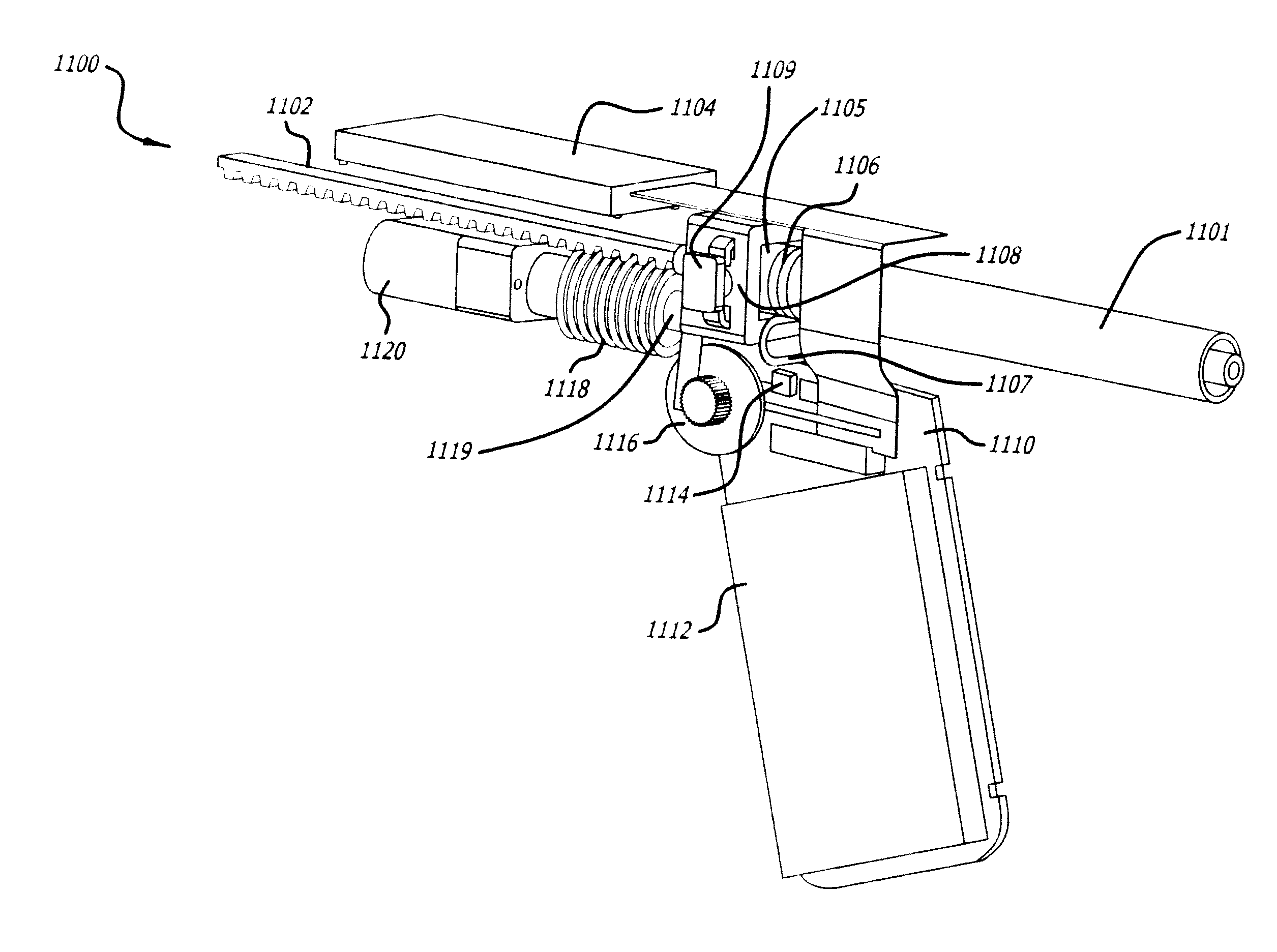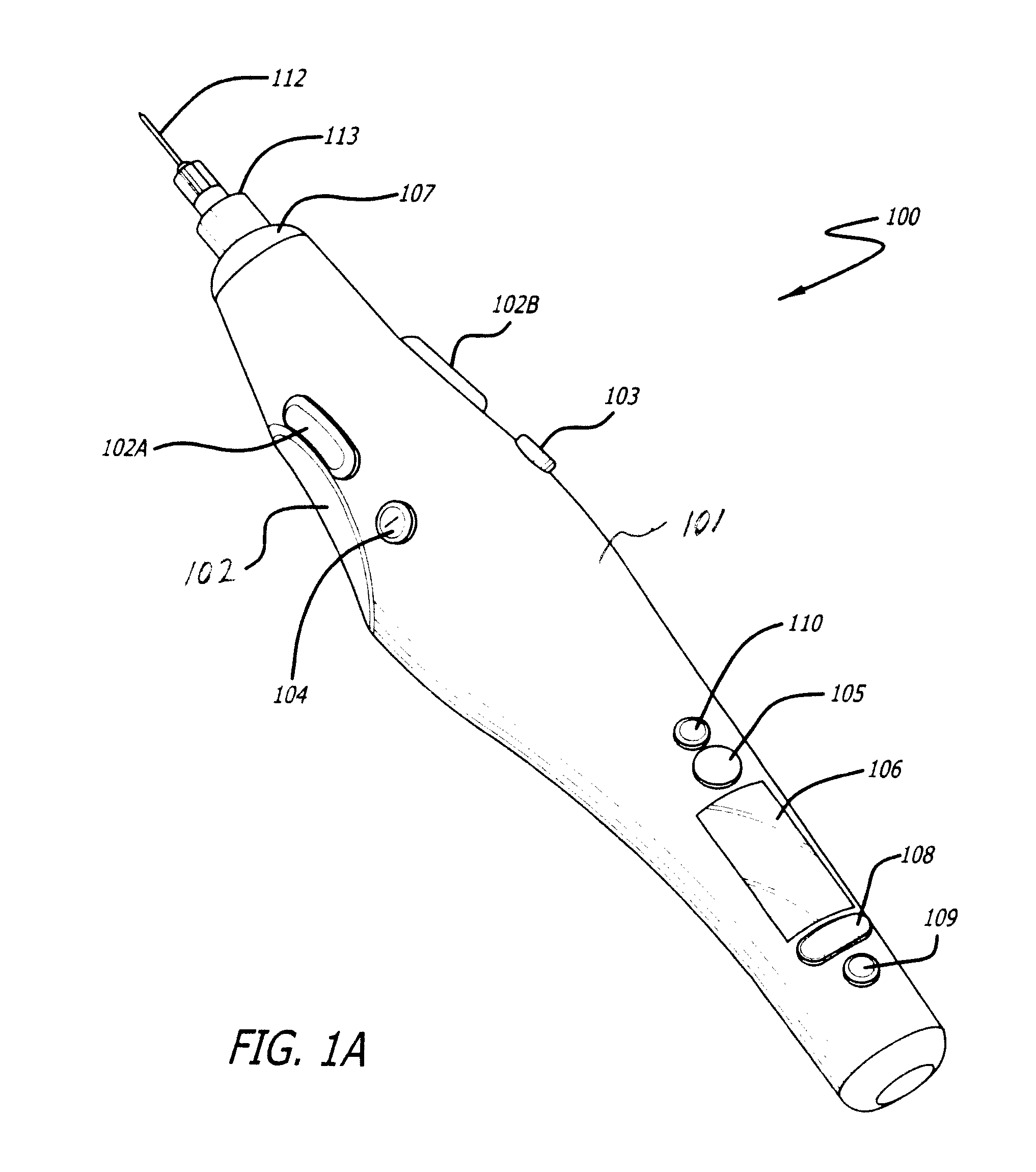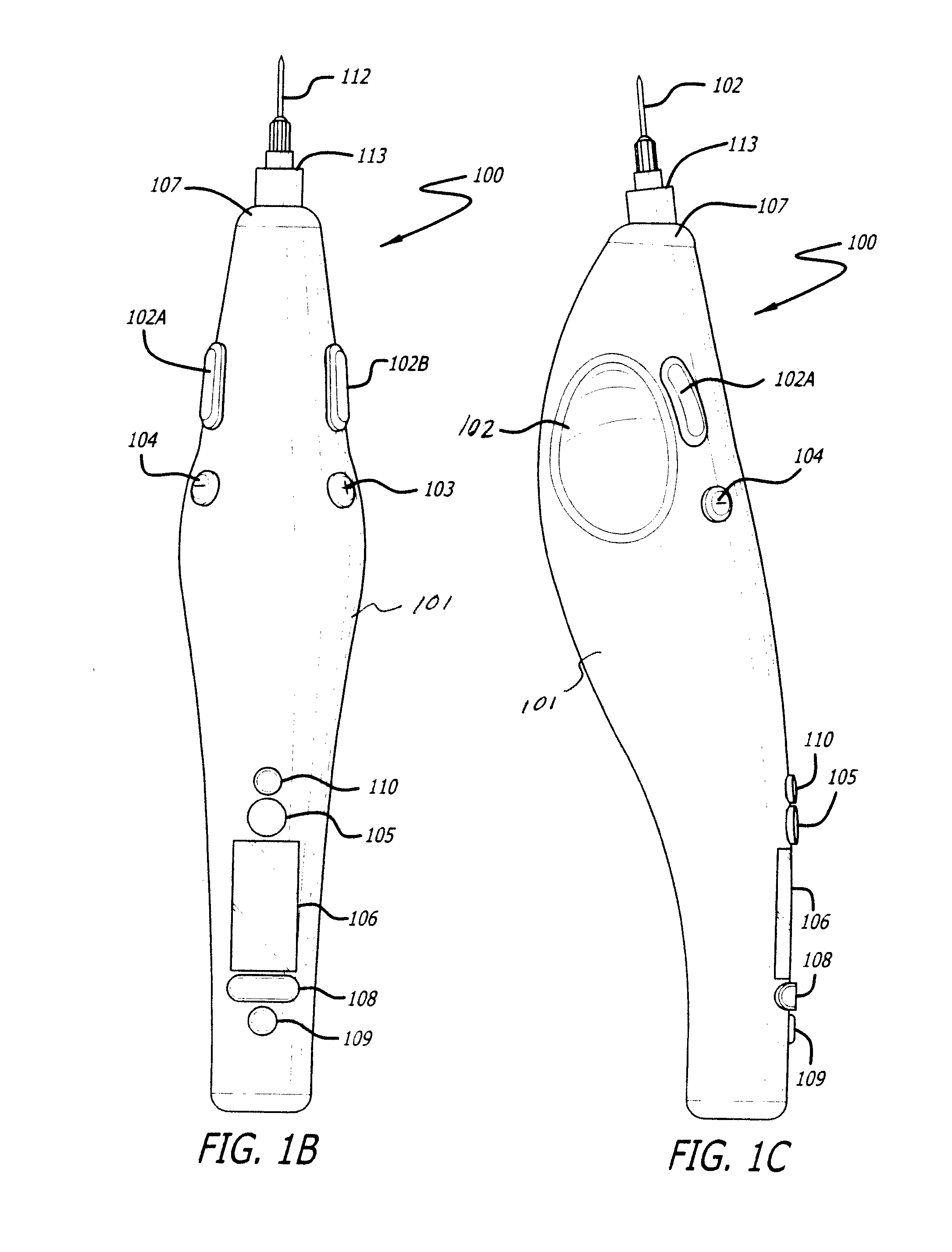Injection device for soft-tissue augmentation fillers, bioactive agents and other biocompatible materials in liquid or gel form
a technology of injection device and soft tissue, which is applied in the field of injection device for soft tissue augmentation fillers, bioactive agents and other biocompatible materials in liquid or gel form, can solve the problems of striking difficulty in striking difficulty in properly using, and difficulty in properly controlling the injection rate, etc., and achieves the effect of being easily maneuverable by a physician and being sufficiently lightweigh
- Summary
- Abstract
- Description
- Claims
- Application Information
AI Technical Summary
Benefits of technology
Problems solved by technology
Method used
Image
Examples
example 1
[0101]Extrusion experiments were performed on 0.8 mL Schott TopPac® (SCHOTT North America, Inc., Lebanon, Pa.) syringe fitted with a Tyco 30 G×½″ needle. Juvèderm™ Ultra (Allergan Inc., Irvine, Calif.) was extruded from the needle to assess the force needed to extrude the highly viscous hyaluronic acid-based dermal filler through a 30 G needle. The results in Table 1 show the results of the experiments.
TABLE 1ApproximatePlunger RatePlunger RateInjection Rate*Approximate Force(mm / min)(mm / sec)(mL / sec)Required (N)200.3330.00623500.8330.015351001.6670.029471502.5000.04460*Schott 0.8 mL syringe, the gradient is: 5.7 mm is approximately 0.1 mL
[0102]For example, to inject the total contents of the syringe at a rate of 0.006 mL / sec, the plunger must travel approximately 46 mm in a time of approximately 2.3 min (approximate plunger rate of 20 mm / min).
[0103]Results showed that depending on the desired injection rate, large forces are required to advance the plunger and inject the viscous derm...
example 2
[0104]This example refers to the device 100 depicted in FIG. 1A-1C, the electronic display screen 400 in FIG. 4, and the injection components of the inner body depicted in FIG. 5.
[0105]The operator turns on the device 100 by depressing power button 105. The electronic display 106 (which may comprise screen 400 in FIG. 4) will power on and indicate the device status as ‘cartridge not loaded.’ The device is then set-up to provide an audible beep to alert the operator as to the status ‘cartridge not loaded.’ The operator proceeds to slide the cartridge into the hole at the front of the device in cap 107. The hole in cap 107 reveals the cartridge chamber in the inner body of the device. The cartridge is slid into the device until it clicks in place. The device then reads the RFID off the cartridge and presents the appropriate data on display 106. Once the data is uploaded from the RFID and processed by the device, ‘Ready’ will be presented on display 106. The operator can then adjust th...
example 3
[0107]This example refers to the device 100 depicted in FIG. 1A-1C, the electronic display screen 400 in FIG. 4, and the components of the inner body depicted in FIG. 6.
[0108]The operator turns on the device 100 by depressing power button 105. A red LED illuminates indicating the device is not ready for injection. The electronic display 106 will power on and indicate the device status as ‘cartridge not loaded.’ The device can be set-up to provide an audible beep to alert the operator as to the status ‘cartridge not loaded.’ The operator proceeds to slide a cartridge of dried botulinum toxin Type A into the hole at the front of the device in cap 107. The hole in cap 107 reveals the cartridge chamber in the inner body of the device. The cartridge is slid into the device until it clicks in place. The device then reads the RFID off the cartridge and presents the appropriate data on display 106. Once the data is uploaded from the RFID and processed by the device, the device indicates to ...
PUM
 Login to View More
Login to View More Abstract
Description
Claims
Application Information
 Login to View More
Login to View More - R&D
- Intellectual Property
- Life Sciences
- Materials
- Tech Scout
- Unparalleled Data Quality
- Higher Quality Content
- 60% Fewer Hallucinations
Browse by: Latest US Patents, China's latest patents, Technical Efficacy Thesaurus, Application Domain, Technology Topic, Popular Technical Reports.
© 2025 PatSnap. All rights reserved.Legal|Privacy policy|Modern Slavery Act Transparency Statement|Sitemap|About US| Contact US: help@patsnap.com



